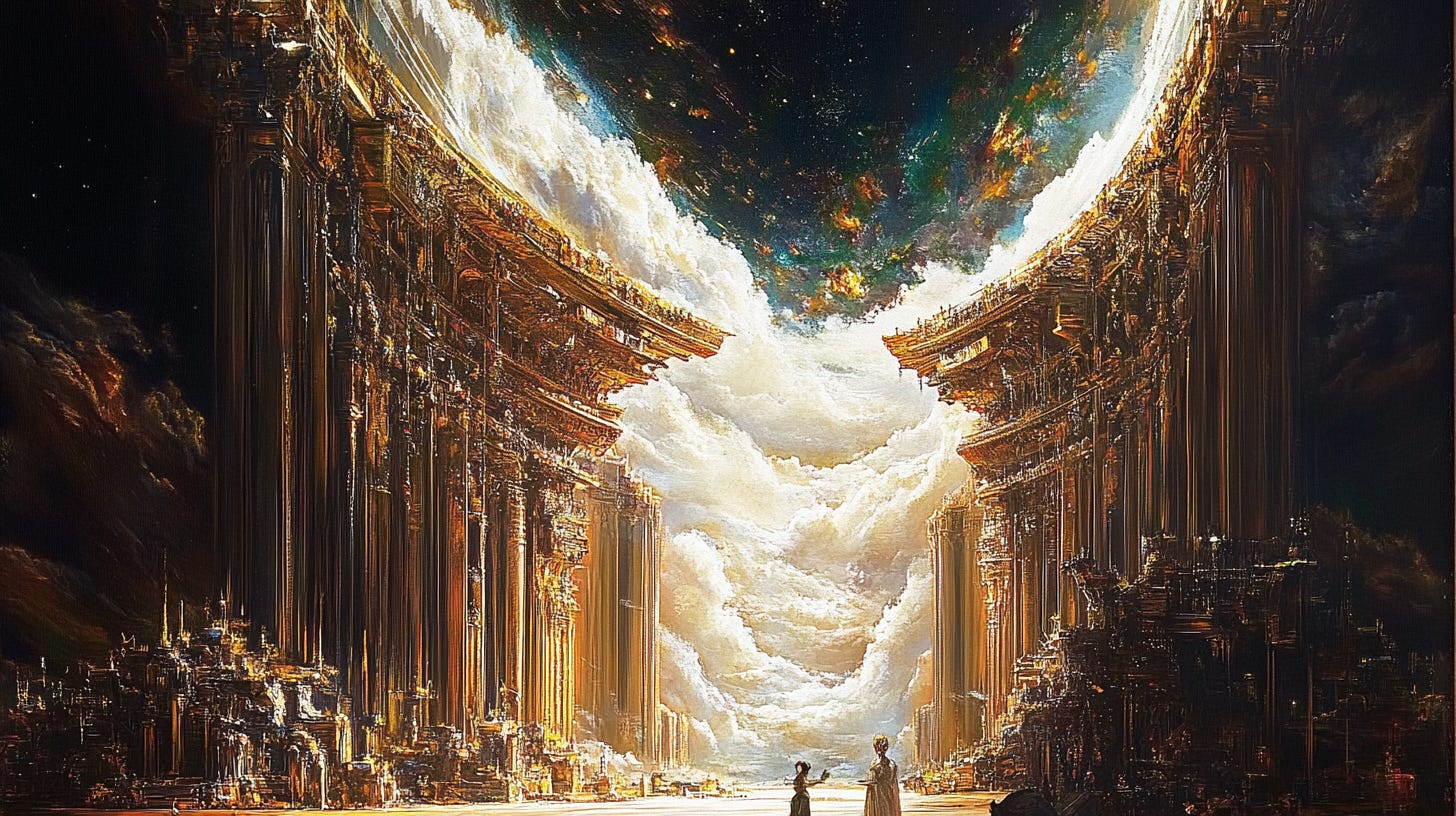The Celestial Mirror
Ancient Wisdom on Vision and Potential
"The greatest women are the ones who can see the potential in a man, where it is possible for him to go."
— Zan Perrion
The Oracle's Vision
In the sacred temple of Delphi, the Pythia gazed not just at the present but into the infinite possibilities of what could be. Plutarch, who served as high priest at Delphi, wrote: "The oracle at Delphi neither conceals nor reveals, but indicates." Like the greatest women, the oracle saw not just what was, but what could become.
Hypatia of Alexandria, the great philosopher and astronomer, understood this power of vision: "Reserve your right to think, for even to think wrongly is better than not to think at all." To see potential is to think beyond the present, to envision the unmanifest.
The Celestial Dance
The ancient Babylonian astronomers tracked the movements of Venus, knowing she would return as both morning and evening star. The Enuma Anu Enlil tablets tell us: "When Venus appears in the East, there will be a time of great transformation." Like these celestial observers, the greatest women track the orbits of possibility in men's souls.
The Egyptian Book of the Dead speaks of Isis, who saw in the scattered pieces of Osiris the potential for resurrection: "I am Isis, and I have come forth from the knot which binds true love." In every fragment, she saw the whole waiting to emerge.
The Alchemist's Art
The ancient alchemists knew that base metal contained gold, hidden but present. Maria Prophetissa, the first known alchemist, taught: "One becomes two, two becomes three, and out of the third comes the one as the fourth." Like these mystic scientists, great women see the gold within the ordinary.
The Emerald Tablet proclaims: "As above, so below; as within, so without." The ability to see potential is itself a form of alchemy, transforming the present into the possible.
The Sacred Geometry
In the temples of Luxor, architects built according to divine proportion, seeing in numbers the pattern of becoming. Vitruvius wrote: "Without symmetry and proportion there can be no principles in the design of any temple." The greatest women are architects of the soul, seeing the divine proportions within human nature.
Pythagoras taught that "The cosmos is ordered by number." In every man lies a sacred geometry waiting to be discovered and brought into harmony.
The Mystery Teachings
The Eleusinian Mysteries taught that within every seed lies the full flower. Cicero, an initiate, wrote: "Nothing is higher than these mysteries... they have not only shown us how to live joyfully but also how to die with a better hope." The greatest women are initiates into the mysteries of human potential.
The Orphic Hymns sing: "From you come all things, in you are all things, to you all things return." To see potential is to recognize the divine spark waiting to ignite.
The Philosopher's Stone
The quest for the Philosopher's Stone was never about mere gold, but about the transformation of the soul. Zosimos of Panopolis wrote: "The stone which is not a stone, the precious thing which has no value, the thing of many shapes which has no shape." Like the stone, potential exists in paradox—present yet unseen.
The Corpus Hermeticum teaches: "The All is Mind; the Universe is Mental." The greatest women understand that seeing potential is an act of divine imagination.
"For in truth, the greatest seers are those who can perceive the oak in the acorn, the bird in the egg, the sage in the seeker. They are the midwives of possibility, the priestesses of becoming."
The Eternal Wisdom
As The Upanishads remind us: "You are what your deep, driving desire is. As your desire is, so is your will. As your will is, so is your deed. As your deed is, so is your destiny." The greatest women are those who can see this driving desire, this seed of destiny, even before it knows itself.
The ancient wisdom echoes through time: to see potential is to participate in the divine act of creation itself.


